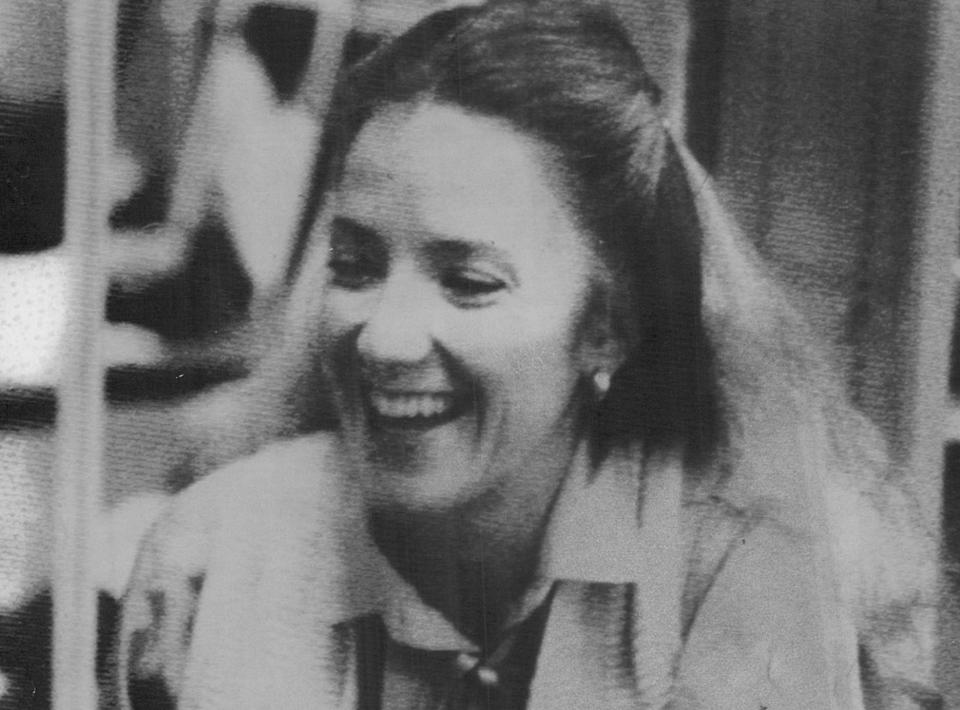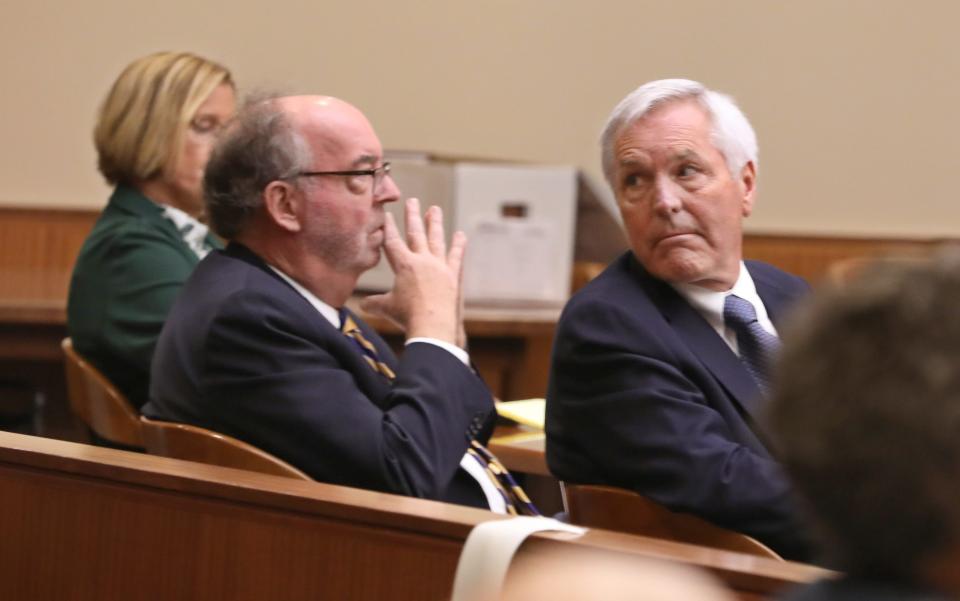Dueling opinions: Estimated time of 1982 Brighton ax murder will be key to alibi of accused husband
- Oops!Something went wrong.Please try again later.
James Krauseneck Jr. was at his Brighton home when his wife, Cathleen, was murdered with a single ax blow to her head — or he wasn't.
Krauseneck was inside the Del Rio Drive house, capable of murdering his wife the morning of Feb. 19, 1982. Or, instead, he was at his job at Eastman Kodak Co.
The jury in the "Brighton ax murder" case is likely to begin its deliberations next week, and the estimated time of death of Cathleen "Cathy" Krauseneck could be a crucial point that determines the fate of the accused. Given that, it's no wonder that hours of testimony were spent with countering opinions on just when Cathy Krauseneck was killed, and whether her husband had an alibi for the homicide.

Key to the differing opinions in testimony — and a significant opinion comes from a now-deceased pathologist — is whether Krauseneck died before or after 6:30 a.m. That is the time James Krauseneck left for work, and he has a solid alibi thereafter.
On Friday, Dr. Katherine Maloney, the deputy chief medical examiner for Erie County, testified that the homicide could have happened after Krauseneck left the home. A defense witness, Maloney challenged some of the earlier claims of Dr. Michael Baden, a well-known forensics pathologist who set the time of death several hours before 6:30 a.m.
Maloney questioned Baden's decision to use an average drop of a single degree per hour after a death, because, she said, the norm is more one-and-a-half to two degrees. Baden said a 1982 time of death analysis from Dr. Evelyn Lewis, a deputy Monroe County medical examiner who died in 2018, likely did not factor in that Cathleen Krauseneck's body was under blankets, providing a slower decrease in temperature.
Lewis determined that the window for the homicide could be several hours before and after 6:30 a.m.
Dueling opinions
Maloney challenged Baden's determination, saying that the temperature decline apparently used by Lewis and herself was one that stood as an industry average because it factored in different variables. The formula likely used by Lewis is "generally what's acceptable in the forensics literature," she said.
"You've never used one degree per hour?" defense attorney Cheryl Meyers Buth asked Maloney. "No," Maloney said.
Lewis tested the temperature of Krauseneck's corpse at the medical examiner's office the evening of Feb. 19, 1982, and that recording of about 81 degrees has been the foundation of the dueling opinions.

Maloney also questioned a factor that Baden used with his equation, namely the stomach contents found during the autopsy of Krauseneck. Lewis had found nothing unusual about the contents and determined that a fluid discovered there likely was bile or normal secretions and not an indication of partially-digested food.
Baden, who testified Wednesday and Thursday, said there were signs in the stomach of undigested food — a finding that also factored into his opinion that the murder occurred well before 6:30 a.m. Baden based his findings on the work and reports of Lewis.
Asked about the gastrointestinal fluids, Maloney said, "It didn't sound like food to me."
Background:Officer tussled with Krauseneck at scene of Brighton ax murder in 1982, court hears
On cross-examination, Assistant District Attorney Patrick Gallagher highlighted experience. Baden has been in the field since the 1960s and testified that he has performed more than 20,000 autopsies and supervised more. He said his belief that the blankets affected the temperature is based on his experience.
Maloney estimated that she has performed about 2,800 autopsies and has gone to only a few scenes of death. Baden testified that he regularly went to death scenes in the early years of his career when he worked in New York City.
As well as her Erie County job, Maloney also has a forensics consulting business and was hired by Krauseneck's defense at a rate of $500 per hour.
On Friday, a third juror in the trial reported sick. That leaves the jury with one alternate as it enters what could be the final week.
Closing arguments are expected Wednesday.
Contact Gary Craig at gcraig@gannett.com. Follow him on Twitter at @gcraig1.
This article originally appeared on Rochester Democrat and Chronicle: Estimated time of death in Brighton ax murder will be key

